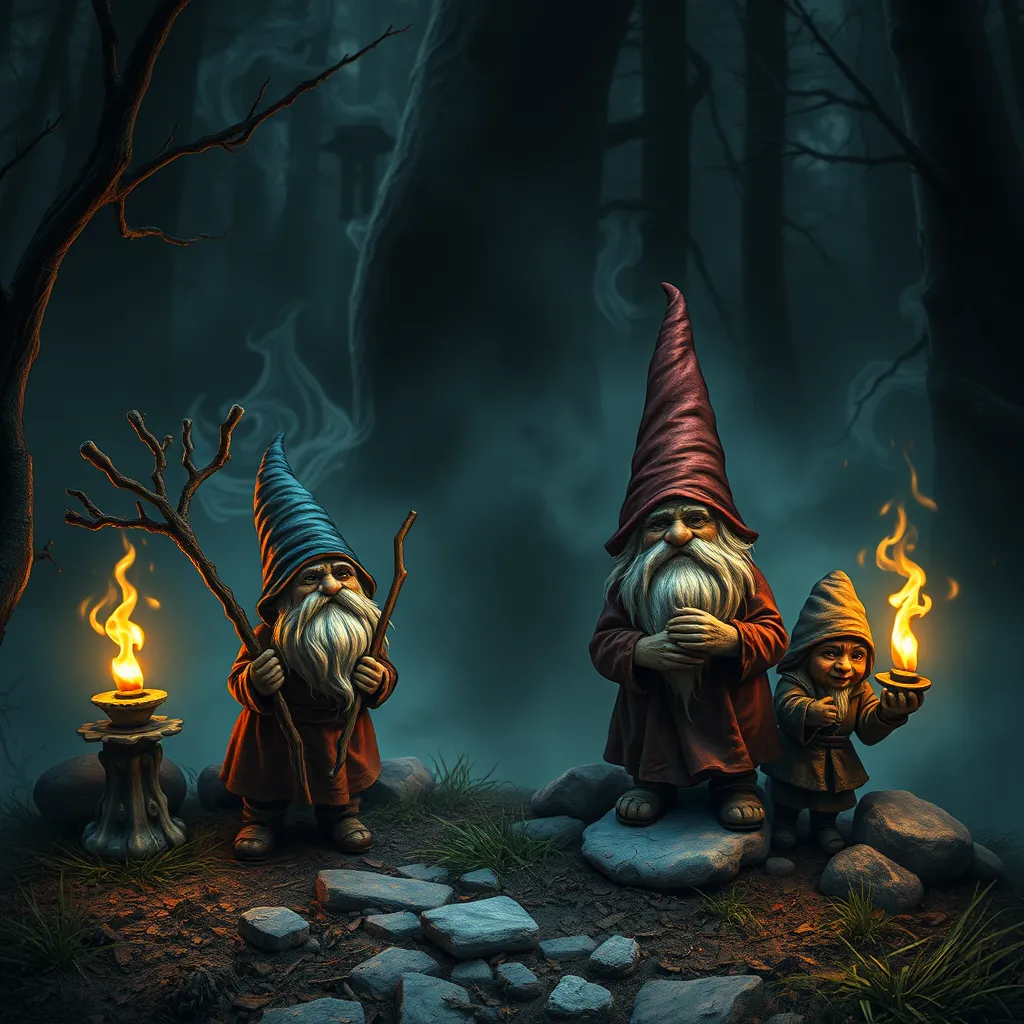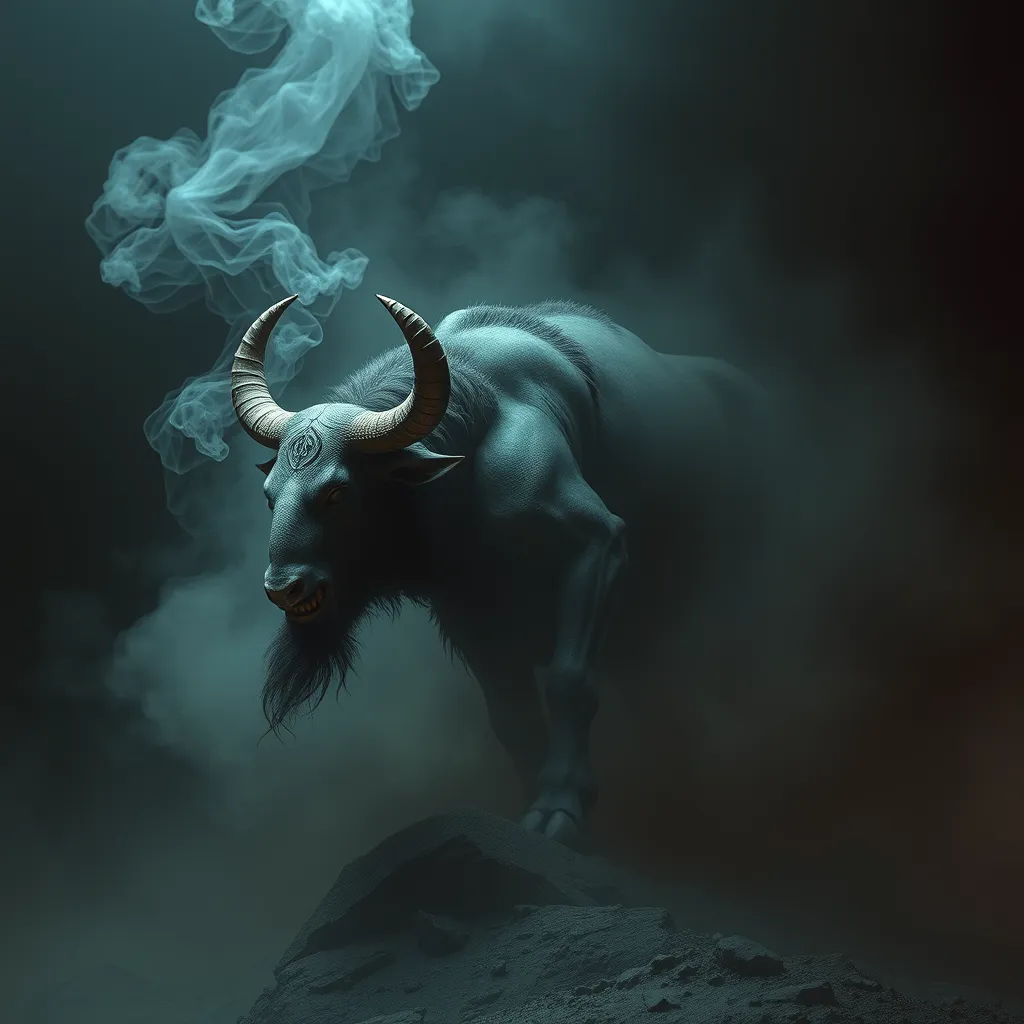Slavic Gnomes: The Domovói and Other House Spirits
I. Introduction
Slavic folklore and mythology are rich tapestries woven from centuries of cultural history, religious beliefs, and the natural world. Within this vast landscape of tales and traditions, the concept of house spirits emerges as a fascinating facet, embodying the connection between humans and their living spaces. Among these spirits, the Domovói holds a prominent place, revered and respected as the guardian of the home. This article aims to explore the Domovói and other Slavic gnomes, uncovering their characteristics, roles, and significance in Slavic culture.
II. The Domovói: Guardian of the Home
The Domovói is often depicted as a small, gnome-like creature, typically associated with the hearth and home. Characterized by a shaggy beard and a friendly demeanor, the Domovói is believed to protect the household and its inhabitants. Traditionally, these spirits are thought to be the souls of ancestors, watching over their descendants and ensuring the well-being of the family.
A. Description and characteristics of the Domovói
Domovóis are generally described as being:
- Small in stature, resembling a gnome or a dwarf.
- Covered in hair or fur, often with a long beard.
- Shy and elusive, typically only seen by children or those who believe in them.
- Possessing a kind heart but can become mischievous if disrespected.
B. Historical context and origins of the Domovói
The origins of the Domovói can be traced back to pre-Christian Slavic beliefs, where they were considered the spirits of the ancestors who resided in the home. These figures were integral to the family unit, embodying the connection between generations. With the advent of Christianity, the Domovói adapted, maintaining its role as a guardian spirit while integrating into the broader spiritual landscape.
C. The Domovói’s role in Slavic households
In Slavic households, the Domovói plays a crucial role, acting as:
- A protector of the home, warding off evil spirits and misfortune.
- A source of guidance for family members, often inspiring thoughts and dreams.
- A mediator between the living and the dead, connecting the family to their ancestors.
III. The Nature of House Spirits in Slavic Culture
Beyond the Domovói, Slavic folklore includes a variety of house spirits, each with unique characteristics and roles.
A. Types of house spirits beyond the Domovói
Some notable house spirits include:
- Domovik: Similar to the Domovói, often considered a more playful variant.
- Kikimora: A female spirit associated with the home, known for causing mischief.
- Leshy: A forest spirit that occasionally interacts with human dwellings.
B. Common traits and behaviors of these spirits
House spirits in Slavic culture often share common traits:
- They are generally benevolent but can become vengeful if ignored or disrespected.
- Their behavior can be influenced by the household’s harmony and respect for traditions.
- They often manifest through sounds, movements, or even the displacement of objects.
C. The significance of house spirits in everyday life
House spirits are integral to Slavic identity, serving to:
- Foster a sense of community and belonging.
- Encourage respect for family heritage and traditions.
- Provide comfort and reassurance in times of hardship.
IV. The Relationship Between Humans and House Spirits
The relationship between humans and house spirits is characterized by rituals, respect, and reciprocity.
A. Rituals and practices to honor the Domovói and other spirits
Families often engage in various practices to honor house spirits, such as:
- Keeping a clean and tidy home to maintain harmony.
- Lighting candles on special occasions to invite the spirits’ presence.
- Reciting prayers or incantations to seek protection and blessings.
B. Offerings and the importance of maintaining a good relationship
Offerings play a vital role in appeasing house spirits, including:
- Food and drink, particularly bread and milk.
- Small tokens or trinkets placed near the hearth.
- Flowers or herbs, which are believed to attract positive energy.
C. Folklore stories illustrating interactions with house spirits
Numerous folklore stories depict interactions with house spirits, showcasing their influence on everyday life. For instance, tales of families finding lost items or receiving protection during difficult times often feature the Domovói or other house spirits coming to their aid.
V. Regional Variations of House Spirits in Slavic Traditions
While the Domovói is a central figure in many Slavic cultures, variations exist across different regions.
A. Differences in the portrayal of the Domovói across Slavic nations
In some cultures, the Domovói is more mischievous, while in others, it is primarily a protective figure. For example:
- In Russia, the Domovói is often depicted as a benevolent guide.
- In Ukraine, the Domovík is sometimes viewed as a trickster.
B. Unique house spirits specific to certain regions
Various regions also celebrate unique house spirits that reflect local customs and beliefs, such as:
- Rusalka: A spirit associated with water, often connected to fertility and harvest.
- Morozko: A winter spirit that can be both protective and vengeful.
C. Cultural influences on the evolution of these spirits
Interactions with neighboring cultures and the influence of Christianity have shaped the evolution of house spirits, resulting in a rich diversity of beliefs and practices.
VI. Modern Interpretations of the Domovói and House Spirits
In recent years, there has been a resurgence of interest in Slavic folklore and mythology, leading to new interpretations of the Domovói and house spirits.
A. The resurgence of interest in folklore and mythology
As people seek to reconnect with their cultural roots, interest in traditional beliefs and practices has grown, leading to:
- Incorporation of folklore into modern storytelling.
- Revival of traditional rituals and customs.
B. Representation in literature, art, and media
The Domovói and other house spirits have found their way into contemporary literature, art, and media, often portrayed as:
- Charming characters in children’s books.
- Symbols of nostalgia and cultural heritage in visual arts.
- Figures in films that explore themes of family and belonging.
C. Contemporary practices and beliefs related to house spirits
Modern practices often blend traditional beliefs with contemporary lifestyles, leading to unique expressions of honoring house spirits, such as:
- Creating altars in homes to celebrate family heritage.
- Engaging in community festivals that honor house spirits.
VII. The Role of House Spirits in Slavic Festivals and Traditions
<p



